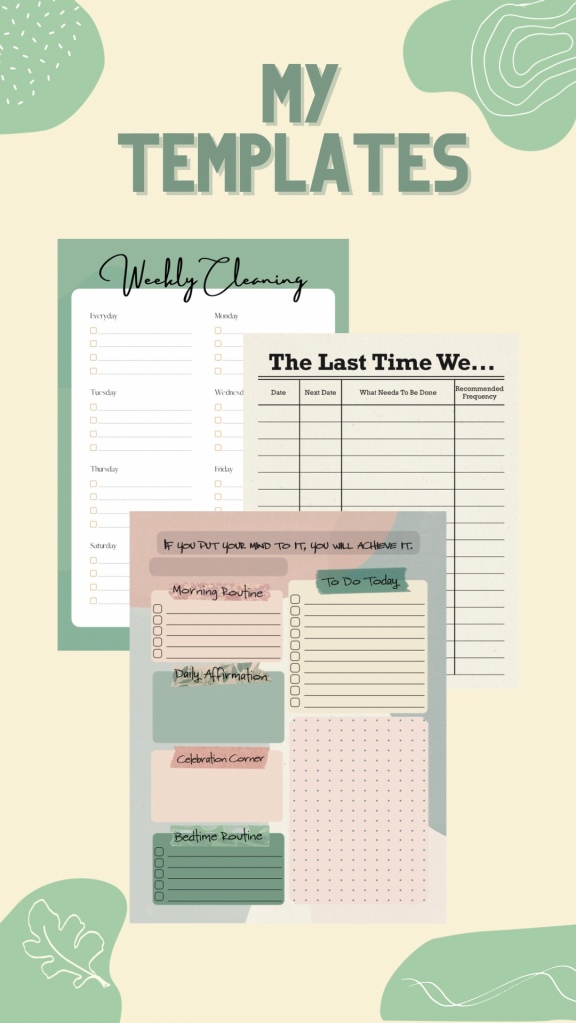I don’t remember exactly where it came from, but I used to think that in order to change my life, I need to get up at the crack of dawn, workout, and then go about my day. Now, I’m sure that people who do that on the regular have their life together and can talk about all the positives that result from their routine.
However, I am not one of those people. I am not a morning person by any stretch of the imagination. If I had a super early shift, sure, I would get up because I have an external obligation and a strong sense of responsibility. But to do it daily for no outward reason? Not me.
The problem was that I went through phases where I convinced myself that I HAD to be that person. This only resulted in major disappointment and some unhealthy negative thoughts about myself. I thought there was something wrong with me because I couldn’t get my act together and become a morning person.
In retrospect, I did three things that didn’t mix well:
- I tried to force myself into a little box- the archetype of a productive morning person.
- I didn’t let myself adjust- I tried going cold turkey from one lifestyle to another.
- I wasn’t very forgiving toward myself.
I literally set myself up for failure. Not everyone can be morning people and that’s totally ok! I have to find a way to work with my actual self and not some impossible ideal I set up for myself.
Right now that I’m currently funemployed, I’ve had a chance to experiment on establishing some sort of routine. I’m not saying that I’ll fully become a morning person, but if I have the right tools and give myself enough time, maybe I will? I’m open to the possibilities.
What I am trying to keep in mind while I’m experimenting:
- I’m not trying to make the same mistakes as last time.
- I want to focus on making sure that I ease into any new habits I want to build.
- This isn’t going to happen overnight.
My Templates
My favorite professor once tried to give me some advice. He said that instead of looking at something as one big task, I should break it up into different steps and make them more manageable to avoid feeling overwhelmed. When he told me this, I was stubborn and thought I was Supergirl- I can continue with the same bad habits and still succeed! Spoiler alert: that’s not what happened.
In an effort to incorporate his advice, I created three templates that can help me break up different tasks that I get overwhelmed by and also keep track of them. The templates are of a daily planner, a weekly clean up checklist, and a template where I can keep track of when my big ticket appliances were last cleaned. To be completely honest, I am extremely proud of them because not only did I have a chance to use my creative muscles in my favorite program (InDesign!), they also are very functional.

The Daily Planner
I have tried different forms of planners in my lifetime. Most recently, I tried the old reliable notebook and pen. I went this route because I don’t like the idea of keeping a journal or planner on a computer but I also didn’t want to waste a ton of paper by printing out a template everyday. Since I’m journaling everyday, why not just include it there? So everynight, I would write out my layout for the next day. At first, I didn’t mind the task, but eventually, my brain started considered it a chore and I avoided journaling all together.
This time around, I created a template that I use to check in with myself everyday. I uploaded it to Good Notes and use my iPad and Apple Pencil to write in it instead of typing anything. Best of both worlds.
This template is fairly simple. Sure, I made it in a color scheme that I like and added some cute elements like washi tape and a cool background. But I think the sections themselves are very flexible.
Instead of a schedule block with time increments, I incorporated a to-do list. In the past, if I didn’t end up following my overly optimistic schedule, I would carry around guilt and feel bad for the rest of the day. If I’m lucky, I didn’t carry those negative feelings to another day. So I thought, why even give myself a chance to feel bad? Let’s stick to the basics. I’ll write down what I need to get done and prioritize them, but I won’t force myself into thinking that I need to get it done during a specific time.
I also excluded any habit trackers. These would include sections that keep track of water consumptions, any food planning or exercise, or any activity I want to do everyday. I didn’t want to fall into the pit of keeping track of the same habit in different ways because that would just add to my mental workload. I figured that if I wanted to start using habit trackers, I can use one of the multitude of options that exist in the App Store without adding it onto the daily template.
I made sure to include the sections ‘Daily Affirmation’ and ‘Celebration Corner’ for my mental health. Since I would like to work more on my positive thinking (or lack thereof), I want to start the day by writing down a positive affirmation. Right now, I am using the app “I Am” to get a new positive affirmation everyday. I find the app very useful because they have a widget where I can see the affirmation throughout the day. I can still keep it fresh in my mind without having to constantly pull out my planner.
With that line of thinking, I included ‘Celebration Corner’ because I wanted to create a section where I gave myself permission to celebrate anything I’m proud of or grateful for that day. It can be very easy for me to talk negatively about myself. I find that sometimes that feeling can linger for a few days, weeks, or even months. So I’m flipping the script and making it a habit to celebrate myself. So far, I’ve included things like a picture of a delicious Buffalo Chicken Stromboli I made or the fact that I created the templates.
There are two sections, morning and bedtime routine, that I included to write down the self-care actions I want to prioritize. As much as I hate to admit it, I know some days I’ve felt so overly sad or overwhelmed that I can’t even gather the energy to take care of myself in the most basic of ways, like to washing my face or brushing my teeth.
I left them as a blank checklist so that they are flexible depending on my energy levels and mental health.
Cleaning Templates
One thing that consistently overwhelms me is cleaning. When I start that mental list of chores that need to be done, it quickly spirals into 20 more things. ‘If I do this one thing, then I have to do this other thing. And I also have to do this.’ It easily gets out of control and I end up not doing anything for a few days.
When this happens, then all the cleaning ends up falling into one random day. This leaves me with no time or energy to do anything else on that day. It is not a fun cycle.
In an effort to incorporate my professor’s advice one more, I created the ‘Weekly Cleaning Checklist’ and the template I call ‘The Last Time We…’.
The ‘Weekly Cleaning Checklist’ is split up into the 7 days of the week plus an ‘Everyday’ section. To start off, I only have two things that I want to do everyday: the dishes and sweeping. As a dog ower, sweeping is essential! Then I assigned one room of my apartment to one weekday, but still leaving one day open. That way, we can focus on one or two things on the weekend and not spend it cleaning all day.
For example, on Monday, I focus on the kitchen and the everyday chores. If other cleaning does get done, fantastic. But if it doesn’t, then it’s ok, I’ll worry about the living room on Thursday and the bathroom on Friday.
I also wanted to keep track of any of the ‘big ticket’ appliances that need deep cleaning everyonce in a while but not every week. I would try to keep a mental list of when we last deep cleaned an item, but I would very quickly forget when that was and when it needs to be done again.
I made this template to look like an old school library checkout card because it made me happy. I had sections that tell me what needs to be done, when I last did it and the recommended date of when to do it next. This helps me alleviate the mental guilt of not knowing when I last ran the cleaning cycle on my washer and not knowing when I need to do it next. I also included a section that indicates the recommended frequency, so I don’t trap myself into a rigid schedule.
Next steps
I know this isn’t the end of my experiment. In fact, it’s barely the beginning. I eventually want to incorporate exercise into my routine, but I need to work on how I think about exercise. As with other things, feeling like I need to workout instead of wanting to workout for my physical and mental health makes my brain not want to do it. So I come up with every excuse under the sun to put it off.
But I can’t wait until I’m ready, otherwise I’ll never do it.
Do you have a routine? What works for you? Let me know!

1 Comment